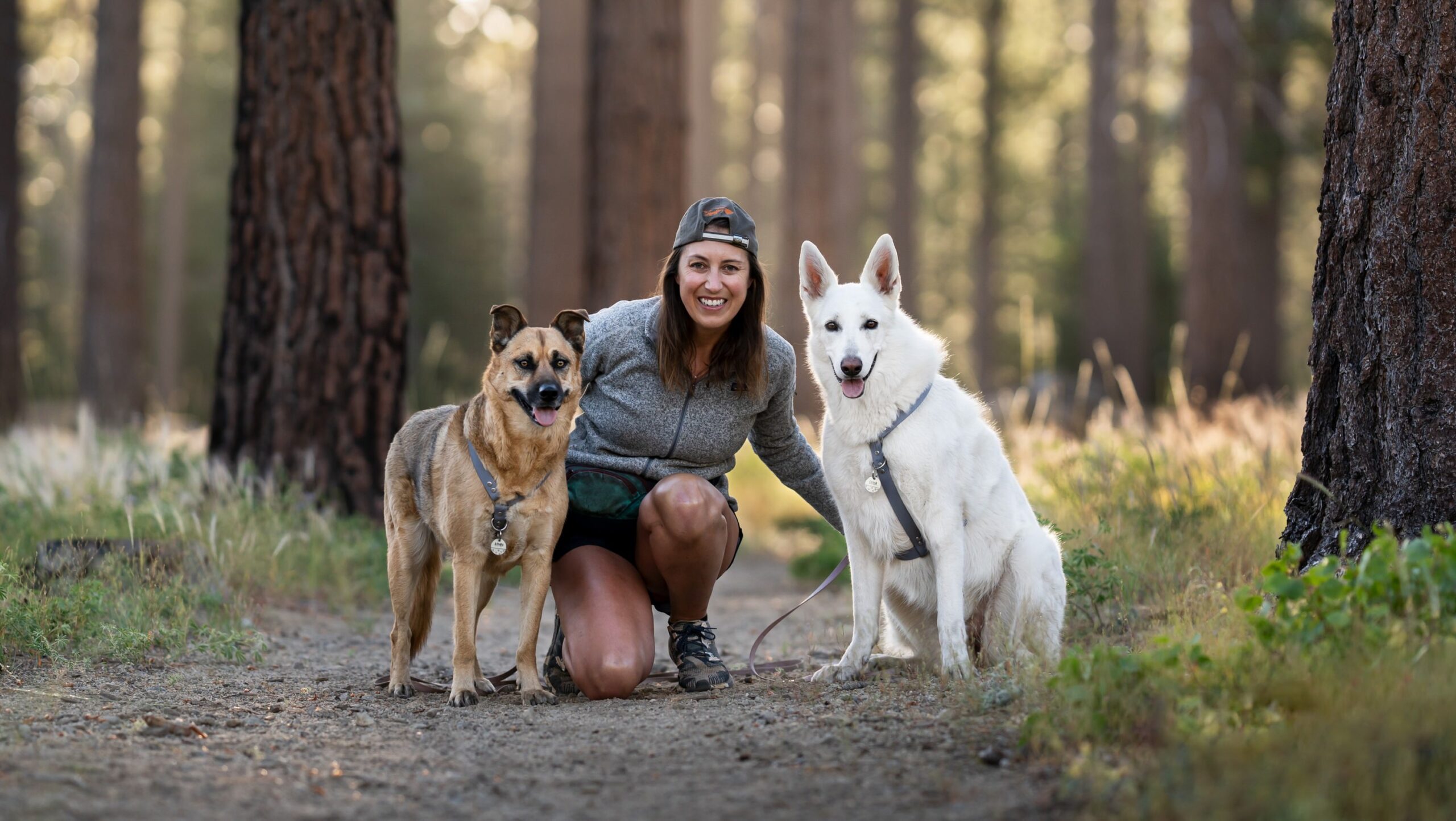Can Your Reactive Dog Have a Dog Photoshoot?
“Can reactive dogs have professional photos taken?”
The answer is an enthusiastic YES! But here’s the secret: success lies in finding a photographer who speaks “dog.” Not just someone who loves dogs, but someone who truly understands canine body language, respects their boundaries and knows how to help fearful or reactive dogs feel safe.
As both a certified dog trainer and pet parent, I know the importance of working with professionals who really “get it” when it comes to our four-legged friends. That’s exactly why I partnered with Ashley Coakley of Dog Inspired Photography to create this guide. Ashley’s experience as a dog photographer is unique because of her beautiful girl, Luna. You can read more about Ashley’s story with force free dog training for her reactive dog here.
Together, we’ve compiled expert tips to help you confidently book a photoshoot for your reactive pup, so you feel prepared and excited about your upcoming session.
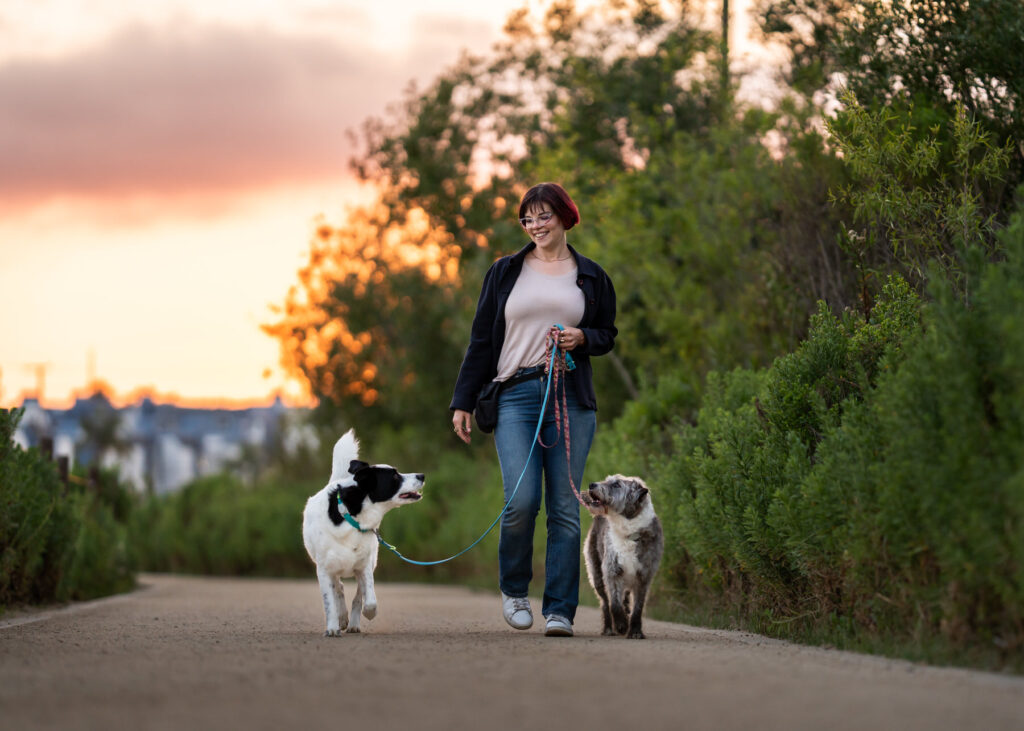
6 Tips for Photographing Your Reactive Dog
1. Choose a Low-Trigger Location
- Avoid areas with common triggers (people, dogs, cars, bikes)
- Consider renting private spaces through Peerspace or Sniffspot
- Look for quiet parks, hiking trails, or fire roads
- Schedule during off-peak hours (weekdays or early mornings)
2. Arrive Early & Acclimate
- Get there 20-30 minutes before the shoot
- Let your dog explore the new environment (for any tips on walking your dog, click here!)
- Allow plenty of sniffing time (it naturally lowers their heart rate!)
3. Take Calming Breaks
- Schedule short breaks between shots
- Let your dog shake off excess energy
- Give space for additional sniffing when needed
- Watch for stress signals and respond accordingly
4. Maintain Safe Distance
- Work with photographers who use longer lenses (more on this below!)
- Keep comfortable space between your dog and the camera
- Never force closer interaction than your dog is ready for
5. Keep Those Treats Coming
- Bring high-value rewards
- Use treats to create positive associations
- Reward calm behavior consistently
6. Set Up for Success
- Communicate your dog’s needs clearly with your photographer
- Have a backup plan if things don’t go as expected
- Remember: as long as you and your dog are having fun, an experience pet photographer will be able to capture great photos for you – there’s no need for anybody to be stressed, including you
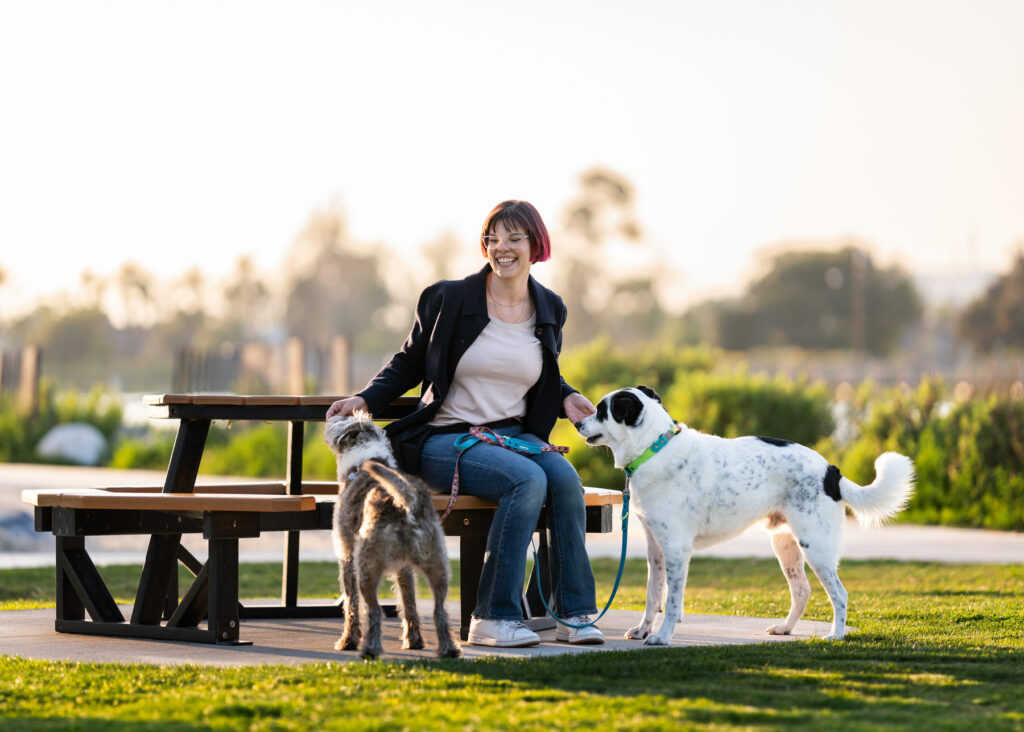
How to Prepare Your Pup for the Perfect Photo Session
The timeline for preparing your dog for a photoshoot varies with each individual dog – while some dogs might be ready for any environment, others may only manage locations off the beaten path, and that’s perfectly okay! The key is preparation and practice before the big day.
Start by familiarizing your dog with the photoshoot location (unless it’s a rental space). Regular walks in the chosen area can help your dog feel more comfortable and confident. During these practice visits, try 15-minute “sniffy walks” using a long lead, allowing your dog to explore and engage naturally with the environment.
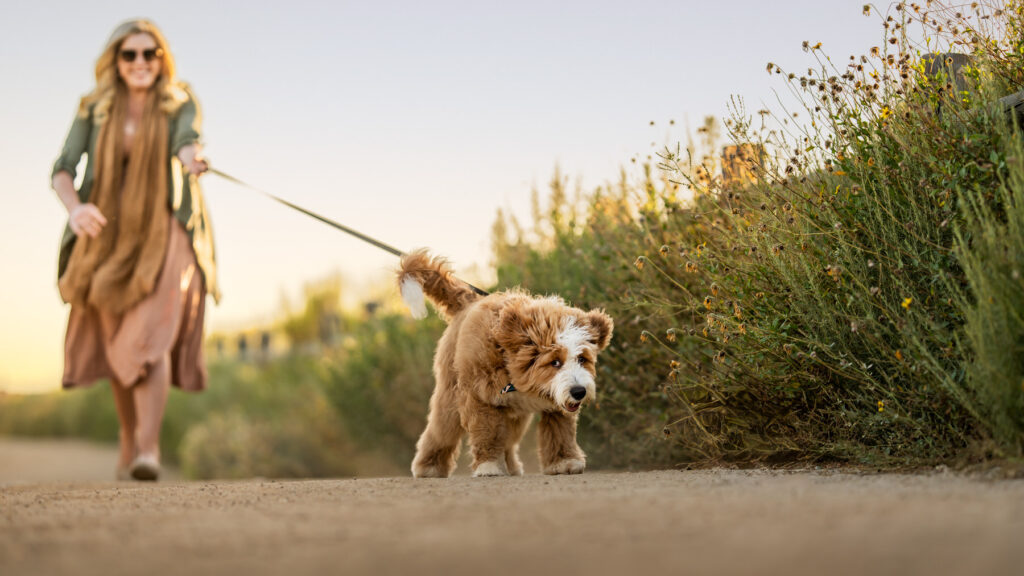
This is also the perfect time to practice basic poses and cues that might come in handy during the shoot. While your dog doesn’t need to be a trained champion, mastering simple cues like “sit,” “stay,” and “laydown” can make the session smoother. For extra fun shots, consider teaching playful cues like “paw”, “high five”, or “kisses”.
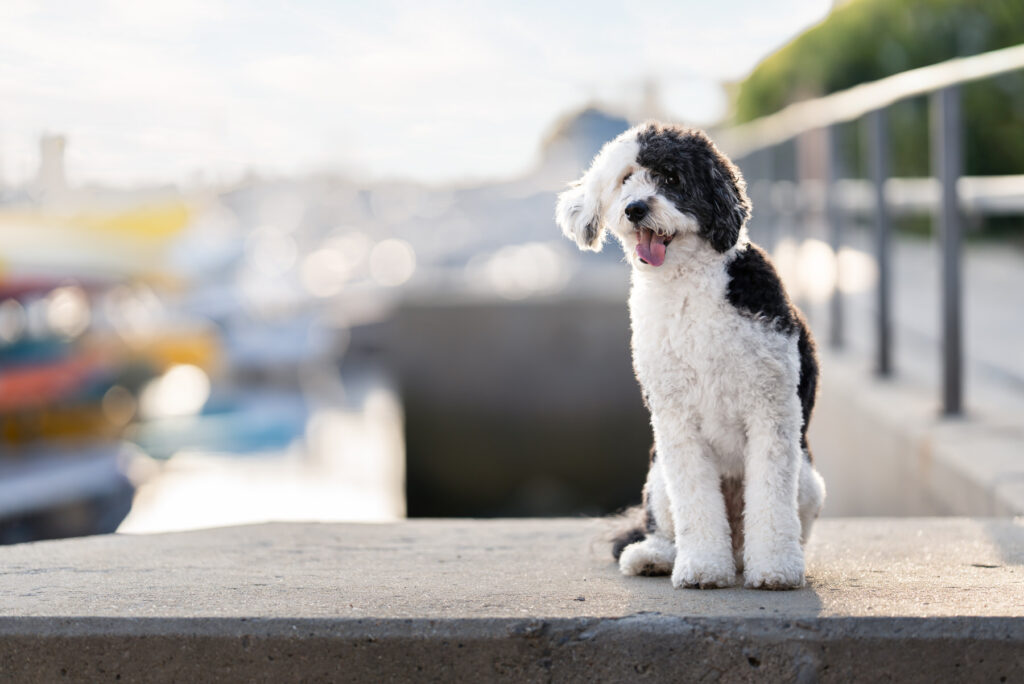
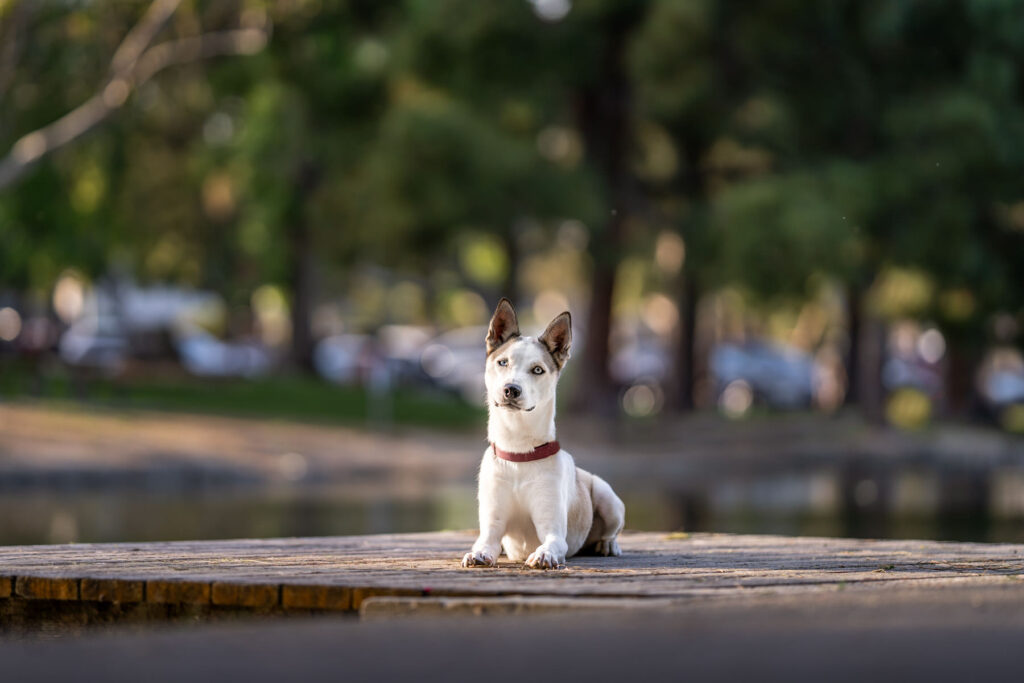
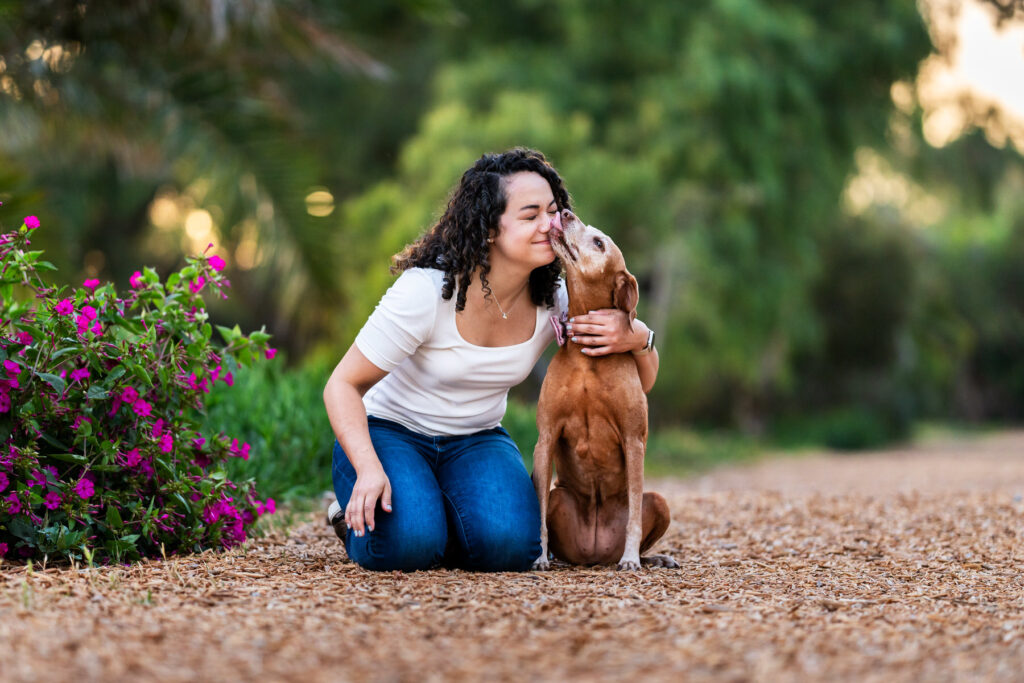
Another crucial step is arranging a meet-and-greet with your photographer before the actual session. This pre-shoot introduction helps build a positive relationship between your dog and the photographer, ensuring everyone feels comfortable on the big day. If you’re shooting in a public space, you might even want to practice having your dog around other people in this location to help them stay calm and confident during the session.
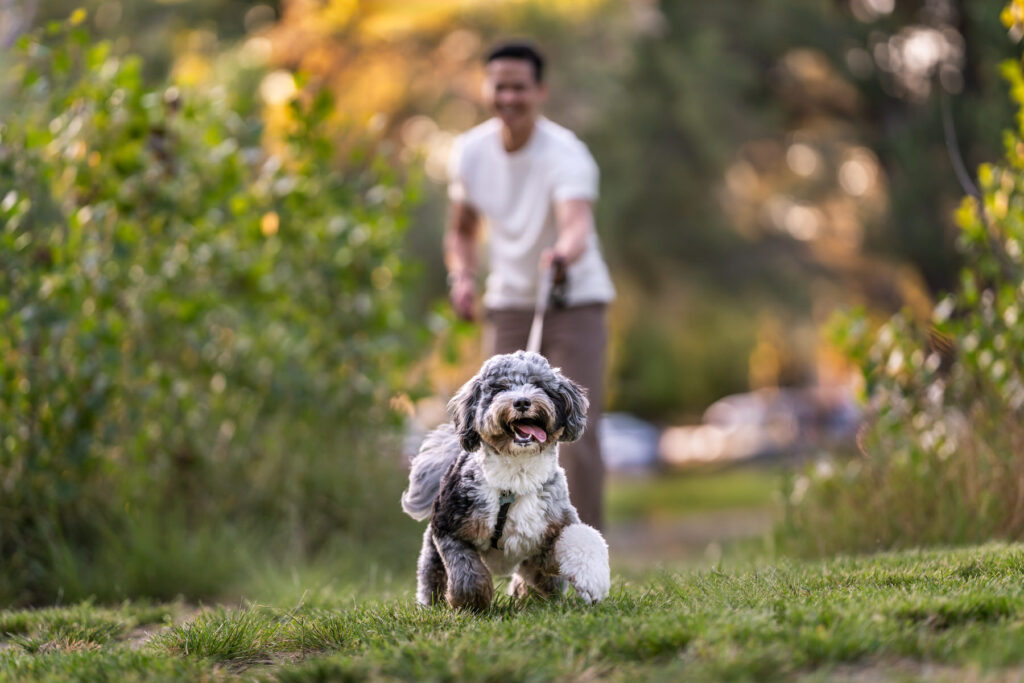
How This LA Pet Photographer Captures Beautiful Images of Your Reactive Dog
From Ashley: For severely reactive dogs, I use my long lens to keep a comfortable distance—often 30 feet or more—so your dog won’t even realize I’m photographing them. This way, they won’t need to feel the pressure of having to interact with me, and I can capture beautiful, soft images without getting too close. In fact, the long lens is my go-to for most shoots because of its ability to produce stunning results. You’d never guess how far away I was for photos that look like they’re close-ups!
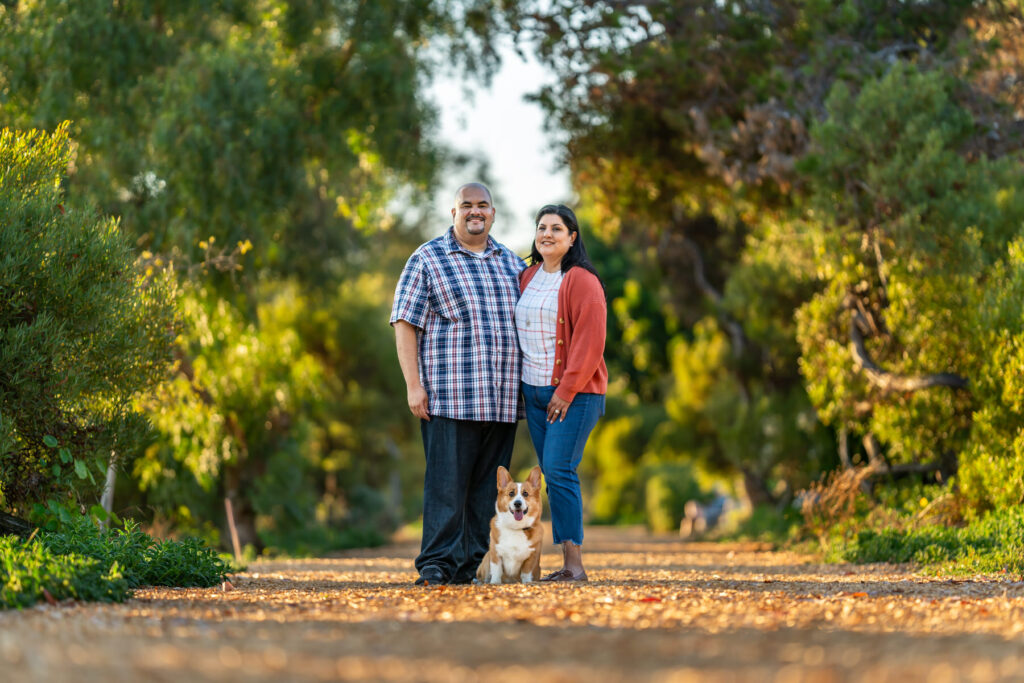
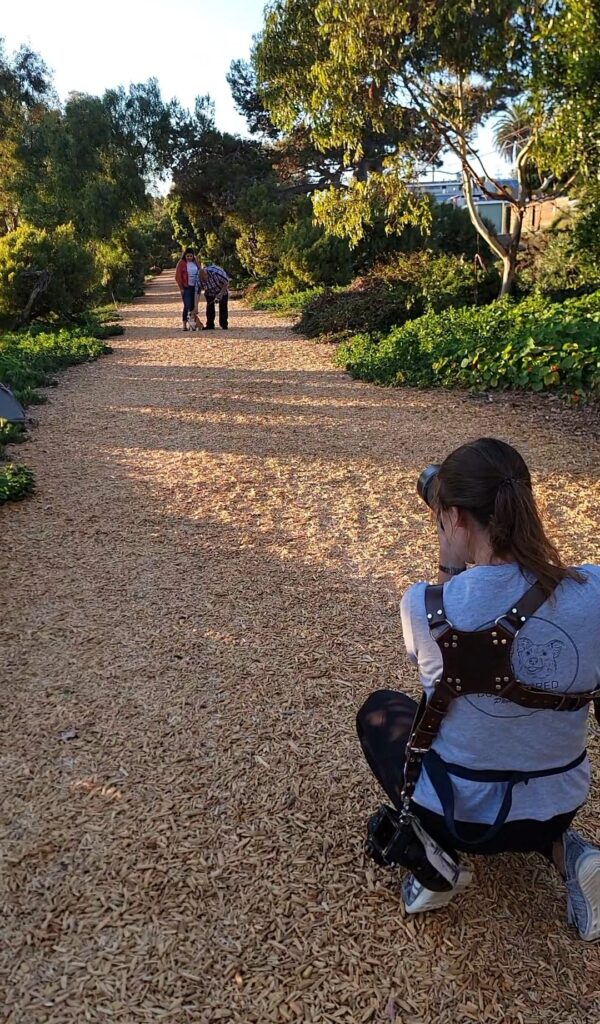
It’s essential to choose a photographer who understands how to work with reactive dogs. Their needs are very different from dogs who enjoy being around people. Reactive dogs prefer their space and don’t want direct attention or physical interaction. I’m vigilant during our photo sessions, and keep an eye out for approaching dogs or people to prevent any surprises for the dog and parent that I’m photographing. This allows both you and your dog to relax, knowing I’m focused on creating a calm and stress-free environment.
We hope this guide helps you feel comfortable in going ahead and booking your dream professional dog photoshoot!
If you want to contact Ashley, please click here.
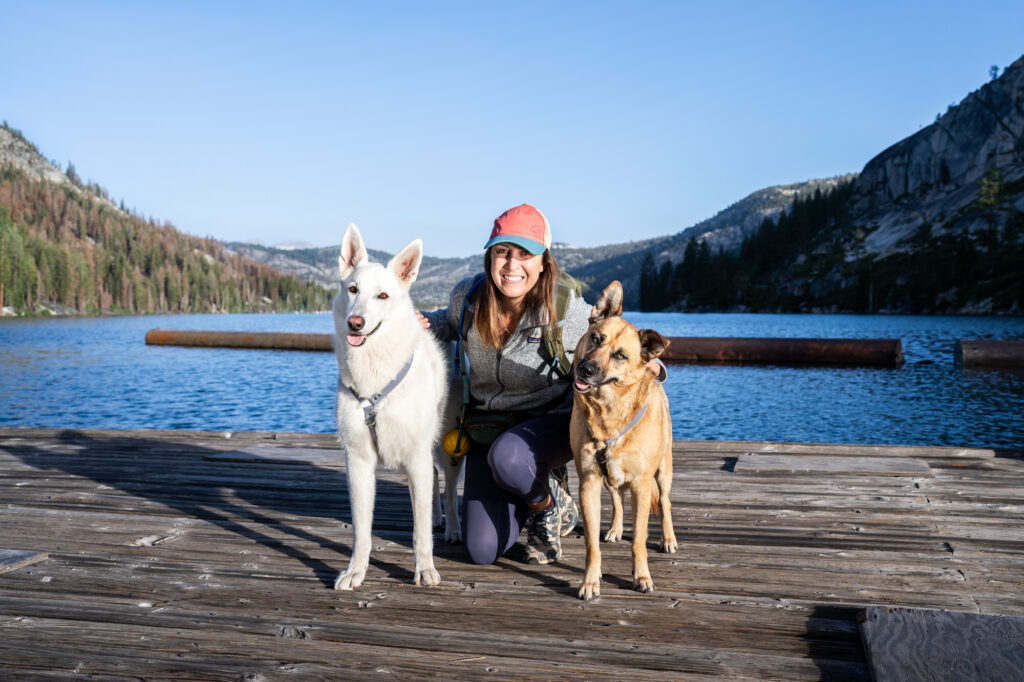
If you want more information about dog training services, please click here.
Leave a Reply Cancel reply
Underdogs Long Beach uses force-free dog training methods to build relationships between dogs and owners.
© Underdogs long beach | Legal
